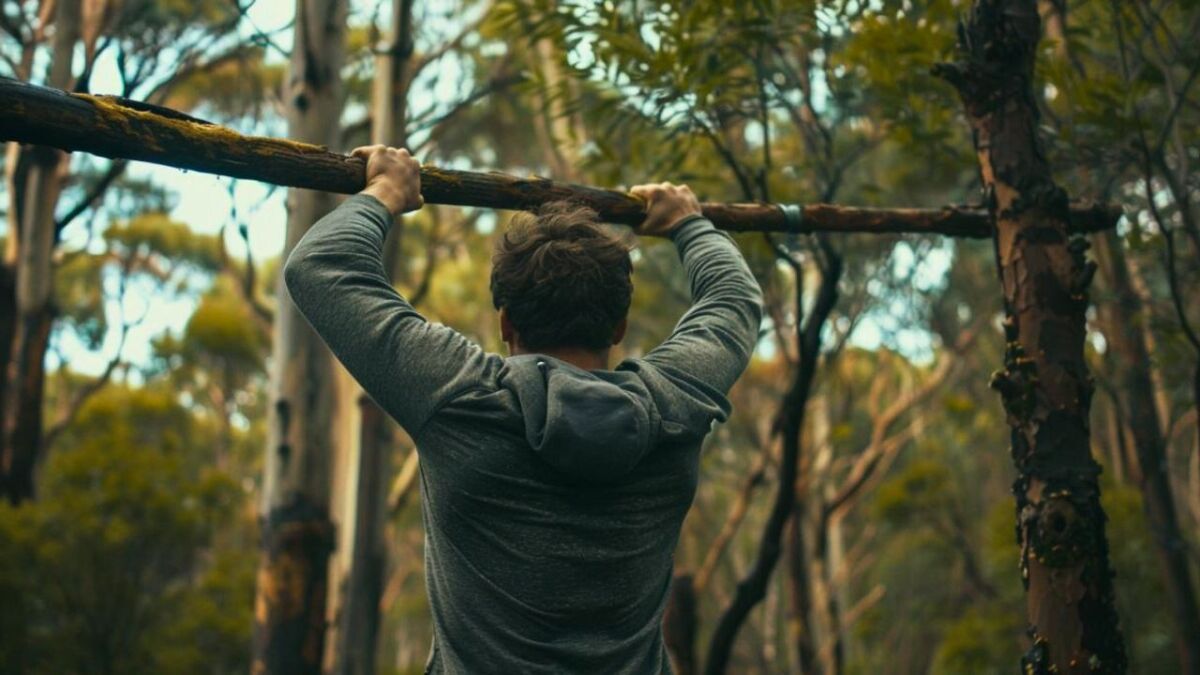
Body training in the forest: Effective workout and sports (Forest Fitness).
👉 The key facts from this guide
- Discover the power of training in the forest and use tree trunks, branches, and stones as your natural gym.
- Improve your strength, endurance, and flexibility with exercises like pull-ups, squats, and lunges in the fresh forest air.
- Enjoy the stress-reducing effect of forest training and strengthen your connection to nature at the same time.
- Gradually increase the intensity of your workout, listen to your body, and choose the right clothing for maximum safety and comfort.
- Discover the benefits of Forest Fitness compared to training in the gym, such as 90% cleaner air and diverse training opportunities.
- Train alone or in a group to increase motivation and fun in sports in the forest, and together overcome the challenges of nature.
Forget the gym - the forest is calling!
Many people think that expensive equipment is needed for an effective workout. Wrong. The forest provides us with everything we need to stay fit.
Whether tree trunks or branches - nature is our best gym, and I'll show you how it's done.
As a wilderness mentor, I have spent years learning how to work with what nature provides us. From making fire to plant knowledge - I know how to utilize the resources of the forest.
Now I share my knowledge about forest body training with you. Immerse yourself in a world where your gym lives and breathes.
What is Forest Fitness or Bushcraft Body Training?
Forest Fitness, or Bushcraft Body Training, is a real adventure in the great outdoors. Imagine working out your muscles while taking deep breaths and the fresh forest air fills your lungs.
This type of training utilizes everything the forest has to offer: tree trunks become weights and branches become pull-up bars. It's a brilliant way to stay in shape and clear your mind at the same time.
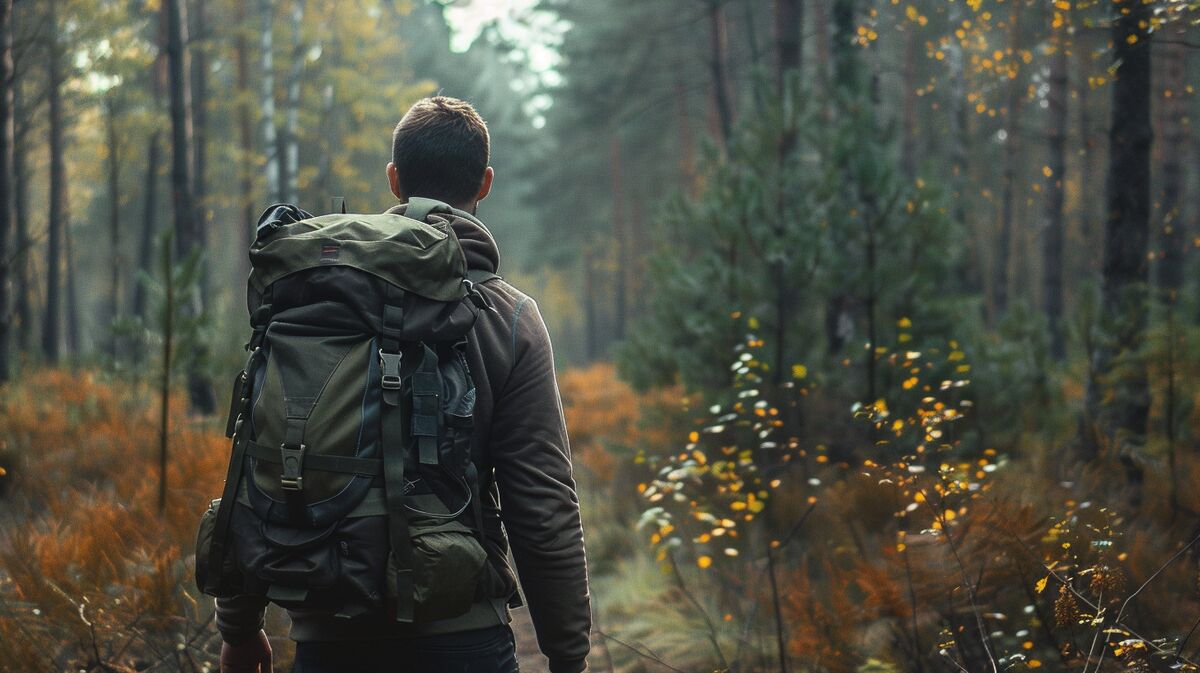
This workout not only strengthens the body, but also the soul and the immune system. You are surrounded by nature and breathe air that contains up to 90% fewer dust particles than city air.
In the forest, every tree trunk becomes a dumbbell and every clearing becomes a gym.
Outdoor sports get your heart rate up without you even noticing. You squat, jump, and stretch under the open sky. In doing so, you not only improve your physical condition, but also strengthen your connection to nature.
It is a playful training that mimics natural movement patterns - perfect for all wilderness people, bushcrafters, and survivalists.
And the best part? It costs nothing, except a little sweat and a sense of adventure.
Advantages of Training in the Forest
- Training in the forest is gentle on the joints, unlike the often hard ground in the gym. You breathe fresh air during your workout in the forest. This is better for your lungs and allows you to breathe more deeply.
- No walls around you - the feeling of freedom is huge. Being outside improves your mood and reduces stress. Sunlight also gives you vitamin D.
- You save money because you don't need a membership. Everything you see around you is your "outdoor gym". Trees become your pull-up bar. A fallen tree trunk is perfect for balance training or as an obstacle.
- Lifting stones? Perfect for muscle building. In the forest, you are flexible. Train whenever you want, without having to adhere to opening hours. This feeling of freedom - priceless.
Basic exercises for the whole body
Training in the forest is like an adventure. You use what nature provides - similar to Bushcrafting. If you want to learn more about bushcraft, refer to my guide "What is Bushcraft?".
For the legs and buttocks, squats and lunges are great. You just need a stable surface.
Sometimes I use a fallen tree trunk to make it harder. Going uphill is also great. It really works the leg muscles and makes you strong.
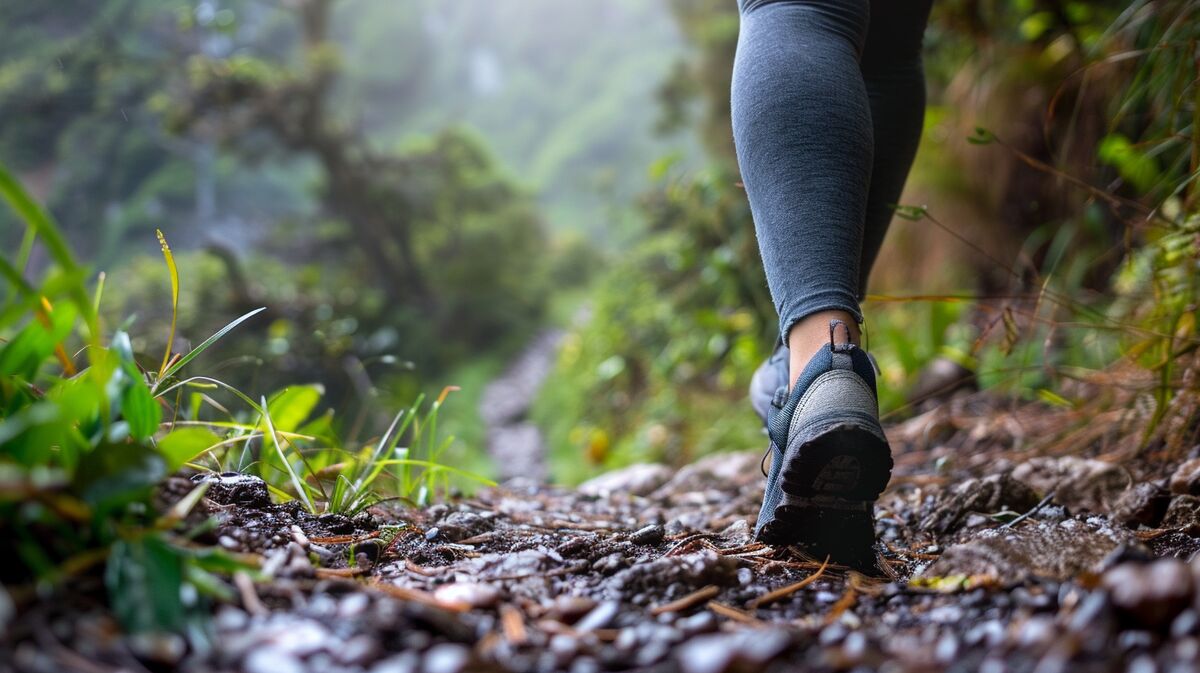
And for the upper body, I find branches perfect for pull-ups. I do push-ups directly on the forest floor. This way, I feel the earth beneath my hands, which gives me strength. Overhead pressing with a smaller log challenges my muscles.
For the core: Crunches can be done anywhere. I find the forearm plank particularly challenging on uneven ground. And Russian Twists? I just use a stone or a piece of wood to help.
This is how I train with what the forest offers me, and stay fit.
Here are some of my favorite exercises for legs and glutes - just using what the forest has to offer.
Legs & Glutes: Squats, Lunges with Tree Trunks, Uphill Walking
Squats for Strong Legs and Firm Glutes
In my life in the forest, I have learned that every movement counts, especially when it comes to fitness. Let's start with squats - a basic exercise for legs and glutes. Stand hip-width apart, as if you want to sit on an invisible chair.
- Find a flat spot in the forest.
- Place your feet shoulder-width apart.
- Tighten your core and keep your back straight.
- Squat down slowly as if you are sitting on an invisible chair.
- Make sure your knees do not go beyond your toes when squatting.
- Push powerfully through your heels to slowly return to the starting position.
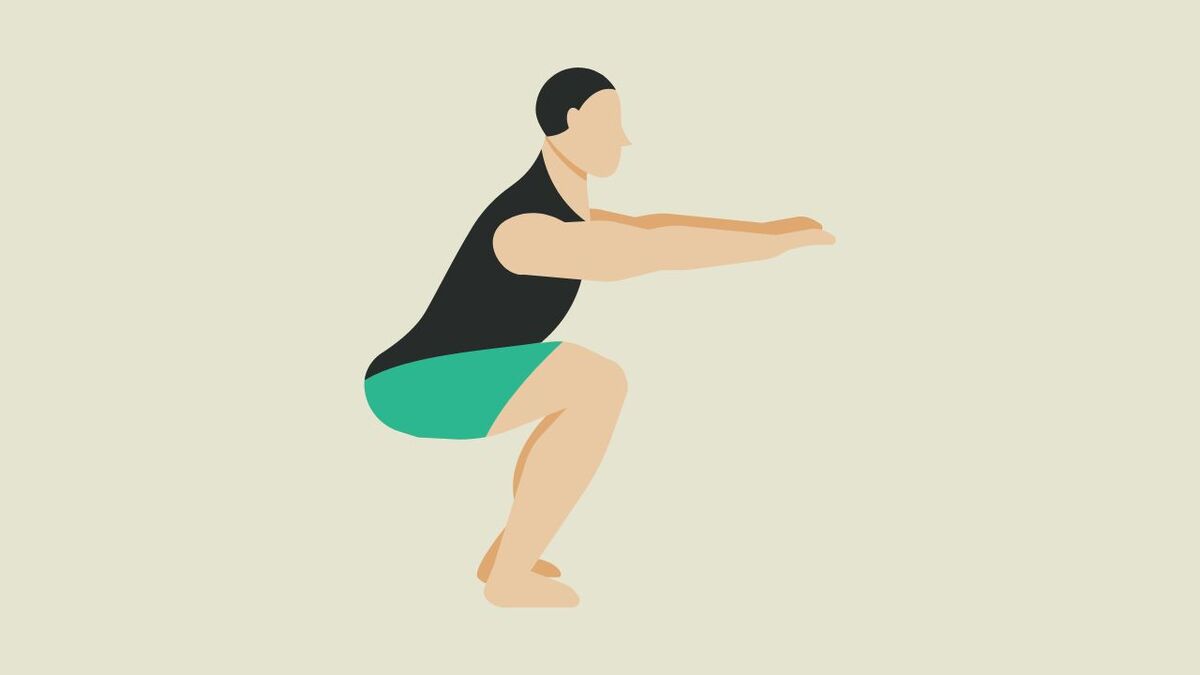
Lunges with Tree Trunks
For lunges, it's best to grab a medium-weight tree trunk. Lift it onto your shoulders, take a big step forward, and bend both knees until the back one almost touches the ground. Then push yourself powerfully back to the starting position.
- Choose a sturdy tree trunk.
- Lift it carefully and hold it on your shoulders.
- Take a big step forward with one leg.
- Lower your body until both knees form a 90-degree angle.
- The back knee should almost touch the ground.
- Push yourself back to the starting position and switch legs.
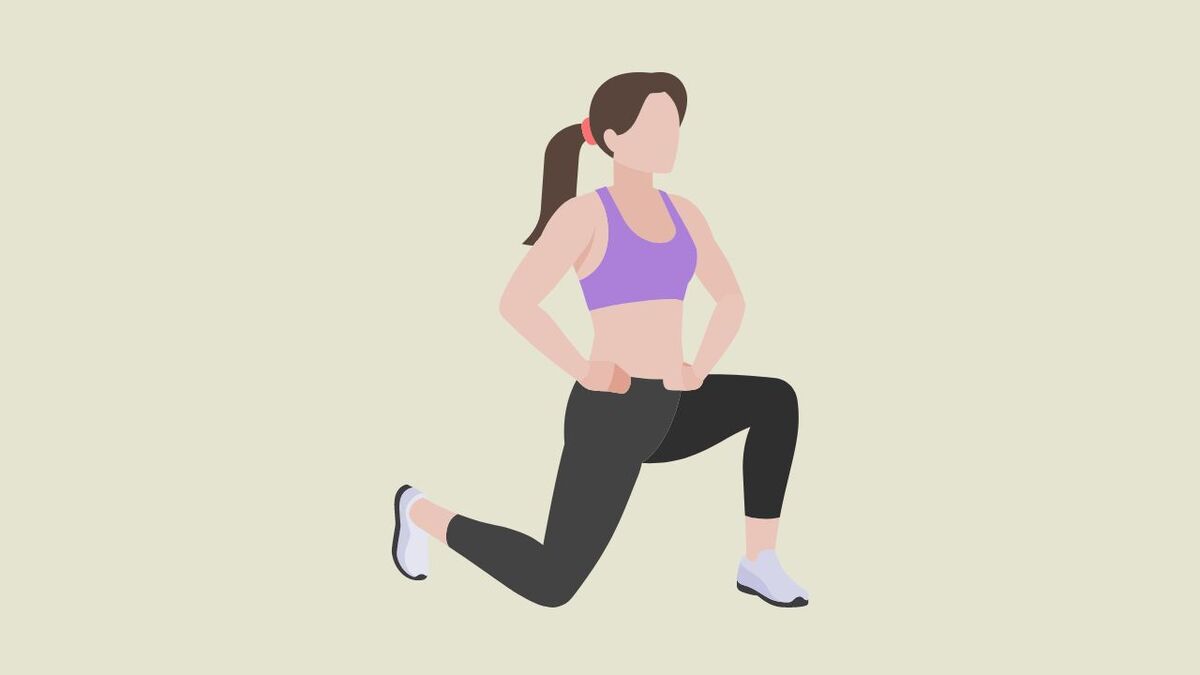
Uphill Walking for Improved Endurance
- Find a steep incline in the forest.
- Start at the base of the hill or mountain.
- Walk briskly uphill, focusing on engaging your leg muscles.
- Use your arms for extra momentum.
- Breathe evenly to enhance your endurance.

If you want more hiking tips, take a look at my guide "13 Essential Tips for Beginner Hikers".
These exercises are not only fun; they also bring you real results! With natural resistances like tree trunks, you train more effectively than in the gym - all without expensive equipment or memberships.
Upper Body: Pull-ups on branches, push-ups, overhead presses with logs
Upper body training in the forest is not only a fresh alternative to the gym, it also connects us with nature.
With pull-ups on branches, push-ups, and overhead presses with logs, we effectively strengthen our muscles. Here are some exercises for a powerful upper body workout.
Pull-ups on a sturdy branch:
Now for the upper body - my pull-ups on a sturdy branch. Grab the branch slightly wider than shoulder-width and pull yourself until your chin crosses the branch line. Lower yourself down slowly to challenge your muscles during the negative movement as well.
- Find a solid, strong branch at a good gripping height.
- Grab the branch with both hands slightly wider than shoulder-width apart.
- Pull your body until your chin is above the branch.
- Lower yourself down slowly.
- Repeat the movement several times.
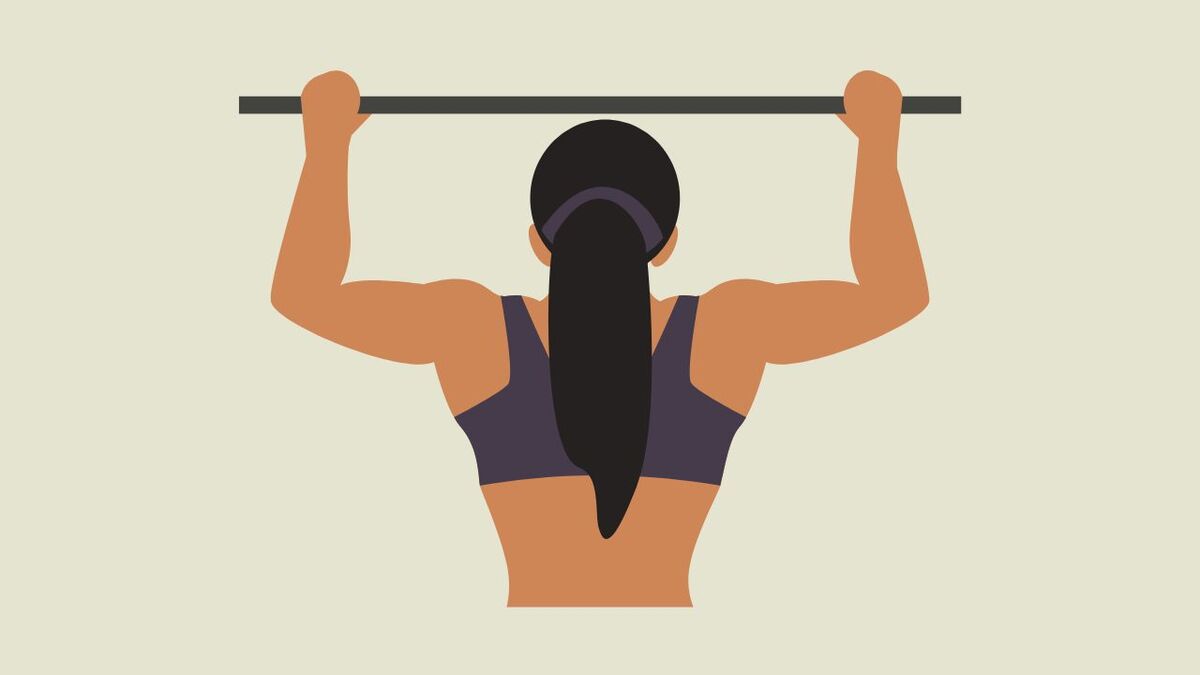
Push-ups on the Forest Floor:
For push-ups, find a flat surface and place your hands shoulder-width apart. Lower your body until your chest almost touches the ground, then push explosively back up.
The great thing about it? You strengthen your arms, shoulders, and chest muscles simultaneously, while also connecting with nature.
- Place your hands hip-width apart on the ground, arms extended.
- Keep your body straight from head to toe.
- Bend your elbows and lower your body until your chest almost touches the ground.
- Push yourself back up.
- Perform as many repetitions as possible.
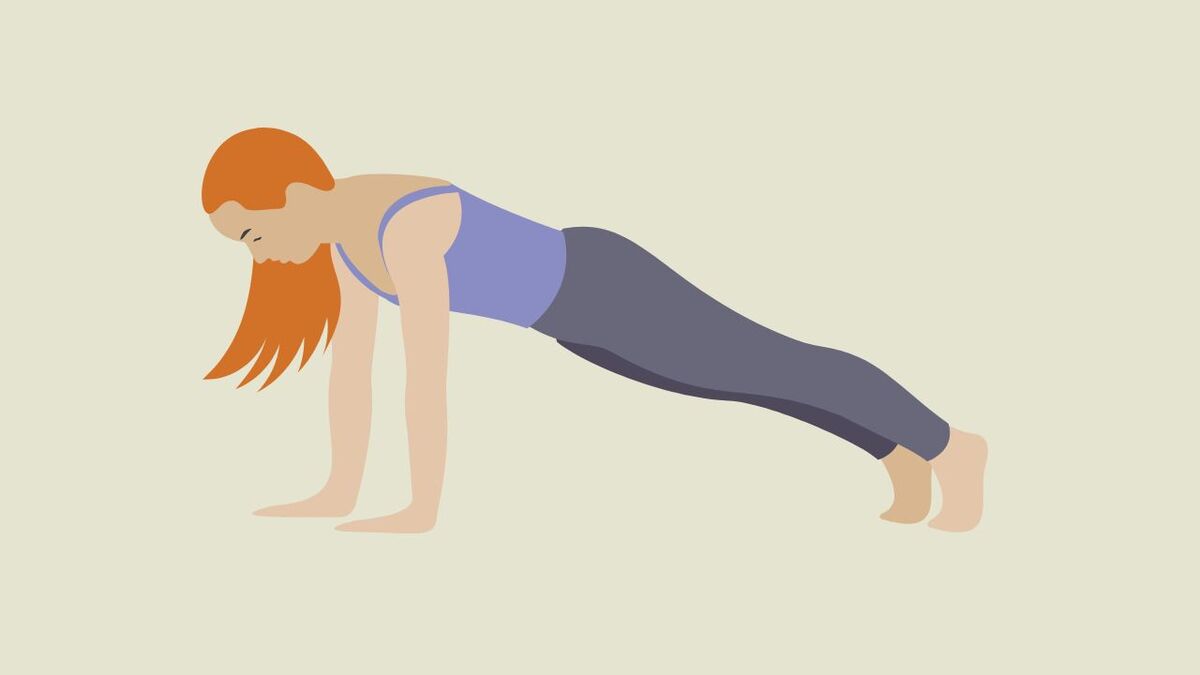
Overhead Pressing with a Log:
- Find a moderately heavy log that you can lift comfortably.
- Hold the log at chest height and grip it slightly wider than shoulder-width.
- Press the log overhead until your arms are fully extended.
- Lowers the log back down to chest level in a controlled manner.
- Repeat this movement.
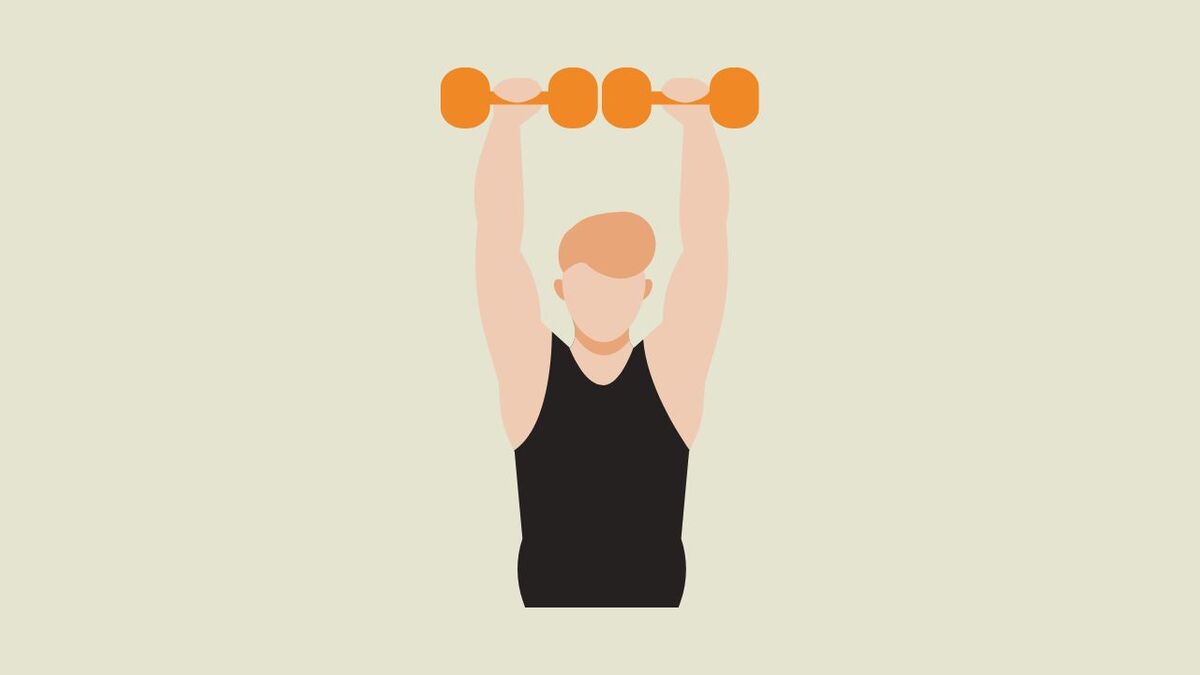
These exercises make use of natural resources from the forest and make our training varied. By lifting our body weight or natural weights, we specifically strengthen the muscles of the arms and shoulders.
Core: Crunches, Forearm Plank, Russian Twists - with Stones or Wood
I love training in the forest. Now I'm sharing my best core exercises with you - straight from my daily workout at the green gym.
Crunches (Abdominal Presses) Between the Trees
- I look for a soft surface, like moss or leaves.
- Then I lie on my back and bring my knees up.
- Interlock hands behind or in front of the head.
- Tighten the abdominal muscles and lift the upper body slightly.
- Sink back down slowly - but not all the way down!

Forearm Plank with Forest Floor Resistance
- Support yourself on your forearms and toes.
- Keep your body in a straight line - no arching of the back!
- Hold the position for at least 30 seconds.
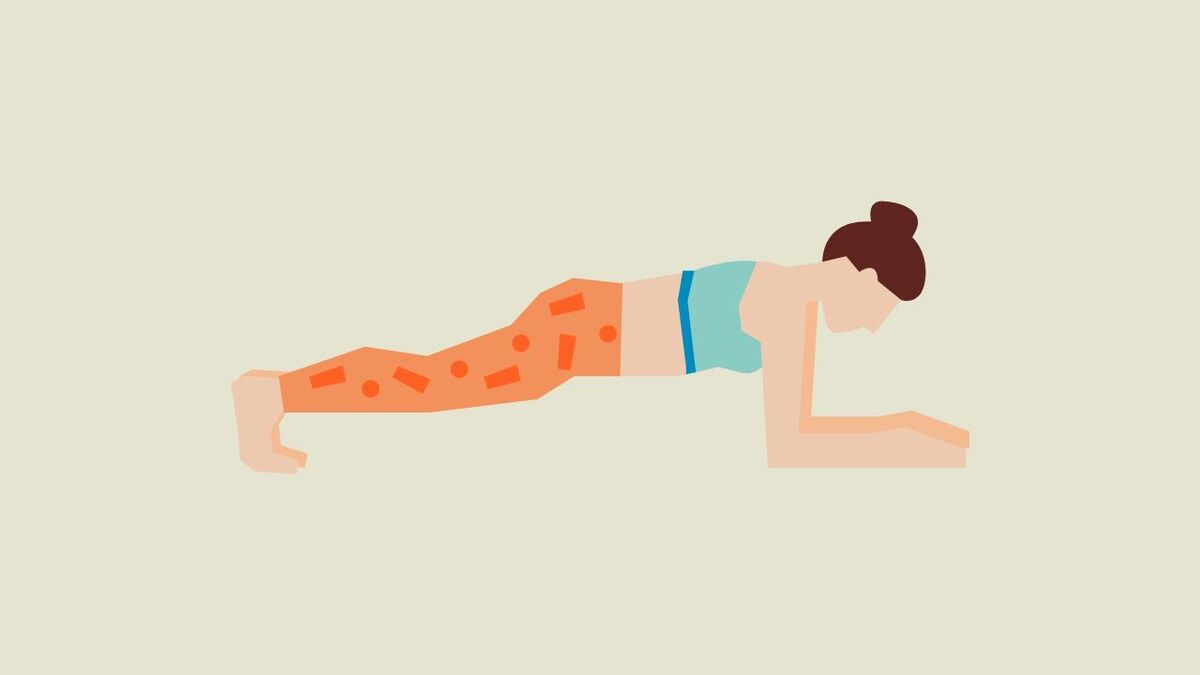
Russian Twists with Forest Finds
- I sit down and pick up a stone or a piece of wood.
- Lift legs off the ground and lean slightly backwards.
- Rotate from side to side with the found object.
- Always remember to engage your core!

I regularly do these exercises to keep my core strong and flexible. Using stones and wood as weights, I utilize everything the forest has to offer for my workout.
Exercises to Improve Mobility & Flexibility
Mobility and flexibility are key in the forest. Yoga among the trees? Might sound unusual at first, but it works wonders. Imagine being deeply connected to nature, breathing in the fresh forest air, and stretching your body at the same time.
This practice not only increases your flexibility, but also your well-being.
👉 My personal favorite exercise in the forest is hanging from a sturdy branch. It stretches my back and feels like a little wellness session every time.
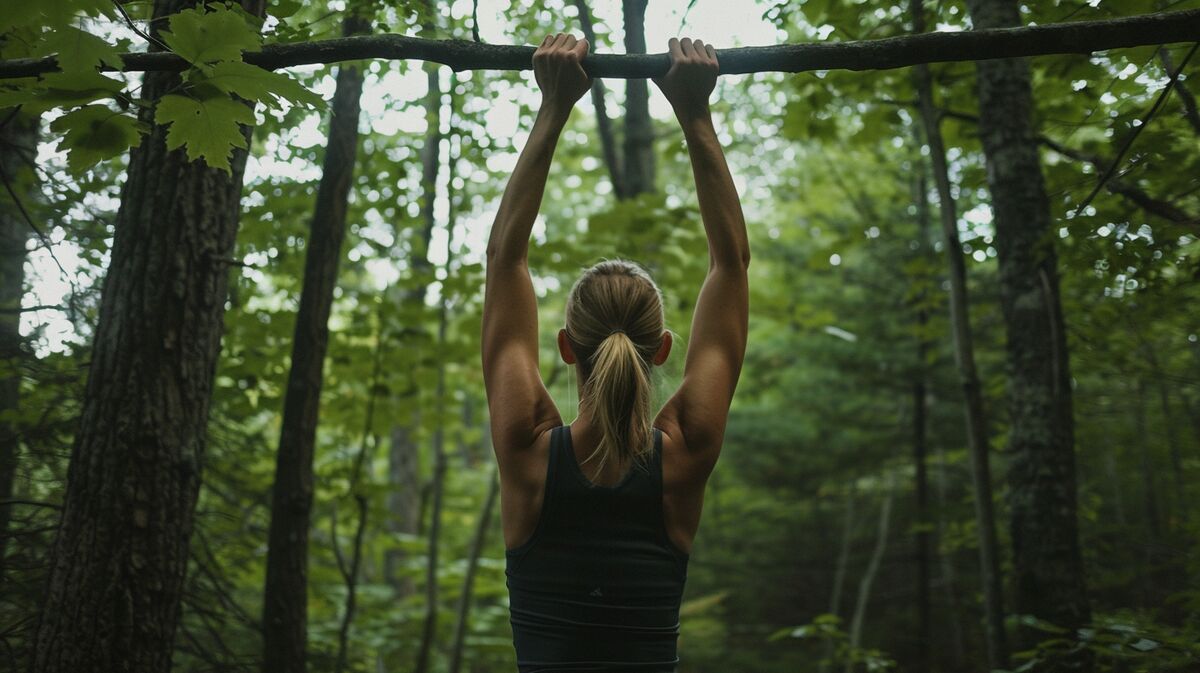
I like to mix things up and use a lot of what the forest has to offer. A fallen tree becomes the perfect support for stretching my leg muscles and glutes.
It is important to listen to your body. If we go too far, our body will immediately let us know.
It's not about breaking records, but about doing good to our body and gently improving our flexibility.
With each unit, I feel my mobility increasing and I move more freely - a real plus for every bushcraft adventure.
Hanging on Bars and Branches to Stretch the Back
Hanging on bars or thick branches is like a magic trick for the back. I grab onto a sturdy branch, let my body hang loose, and feel the gentle pull of gravity on my spine.
This simple hanging not only stretches the back, but also loosens the shoulders and neck. It feels like nature is personally giving me a massage.
Being in the forest and hanging on branches is therapy for the body and soul.
Sometimes I sway gently back and forth to deepen the stretch.
The key is in the relaxation – no pulling, no pushing, just letting yourself hang. This technique optimizes the natural resources of the forest and makes the workout diverse and effective.
Who would have thought that standing still could be so powerful?
Stretching the Chest & Shoulders on Trees
Trees are not just for climbing - they are also perfect fitness tools. I'll show you how to stretch your chest and shoulder muscles on them. Stand with your feet wide in front of a tree and place your hands flat against the trunk.
Now gently push your upper body forward until you feel a good stretch in the chest area. Hold this position for a few seconds, then relax.
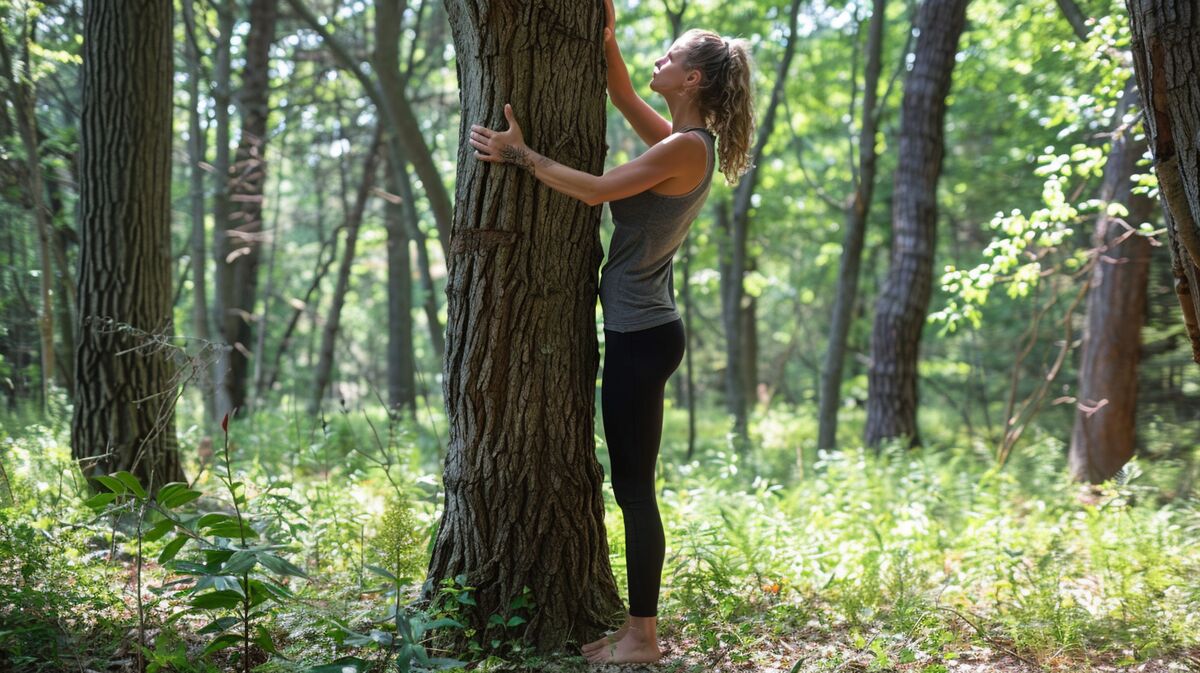
For the shoulders, proceed similarly: hands on the tree, take a step back, and lean your upper body forward. You will feel how the shoulder area stretches wonderfully.
And the best part - you only need one tree for this. Simple, effective, and completely natural. It shows that fitness in the forest is not only diverse but also completely free of expensive equipment.
Detailed explanation of the correct stretching technique
I always take the time to stretch before and after my workout in the forest. This helps prevent injuries and improve my flexibility.
This is how I do it:
- I start with light stretching exercises for arms and legs - simply by trying to touch my toes with my fingertips without bending my knees. (Yes, it often doesn't work at the beginning, but do it as best as you can)
- Then I lean my back against a tree and gently push my hips forward. This stretches my shoulders and chest area wonderfully.
- For my back - a real highlight after a long day with a backpack - I like to hang on to a low branch and let my body hang loose. It almost feels like the forest is giving me a hug.
It is important that each movement is performed gently, without jerking or pushing. This way, stretching remains safe and effective, just as it should be. Trust me, your body will thank you for these little breaks - especially the next morning.
Strength & Endurance Training with Natural Resistance
Training strength and endurance in the forest is something great. Instead of lifting dumbbells, I lift tree trunks and instead of running on the treadmill, I jog and sprint on uneven paths.
So I feel every muscle in my body. Carrying wood or water canisters across the forest not only strengthens the muscles, but also improves oxygen supply.
The fresh air is like an energy boost - my stress almost reduces itself.
Once I tried to jog with two thick branches in my hands. Sounds crazy, right? But it not only challenged my arm muscles, but also put my endurance to the test.
Training in the forest is diverse. No workout is like the other because every stone, every tree trunk is different. This way, the body always stays in tune with nature – ready for every adventure that lies ahead of me.
Carrying & Walking with Water Canisters or Wood to Increase Strength
Training in the forest gives me the feeling of being connected to nature while strengthening my body at the same time.
Today I will show you how carrying and walking with water bottles or wood strengthens the muscles and increases strength.
Strength Training with Natural Loads
- Start with empty canisters: Before filling them with water, start with empty containers. This will help you learn the technique correctly.
- Fill the containers gradually: Increase the weight slowly by adding more liquid. This way, your body adapts to the growing load.
- Use a sturdy backpack: To carry wood or filled canisters, a robust backpack is ideal. Make sure it fits perfectly and distributes the weight evenly.
- Switch up the way you carry: Carry on your back, then in your hands in front of your body, or slung over one shoulder. This challenges different muscle groups.
- Integrate Uphill Walking: Look for inclines in the forest for additional resistance when walking with loads. Your legs and glutes will thank you.
- Maintain proper posture: Make sure your back stays straight and you lift from your legs – especially when lifting heavy loads.
- Play with speed: Walk faster, then slower, and incorporate short sprints. Changing speeds adds variety to your training.
- Strategically incorporate breaks: Short breaks help you endure and avoid injuries.

Carrying loads in the forest may sound simple, but it provides an effective full-body workout - just like our ancestors could have done!
Lifting & Pressing Tree Logs for More Muscle Building
Lifting and pressing thick branches in the forest builds muscles. It's like an outdoor gym, but free of charge.
- Find a suitable branch: Look for a stable, thick enough branch or log that you can grip. It should be heavy enough for you to lift comfortably. Start lighter rather than too heavy.
- Posture is everything: Stand with your feet wide apart, firmly planted on the ground. Your toes slightly pointing outward.
- Grab with both arms: Grip the branch with both hands. Your arms are extended but not locked.
- Lift the branch up: Bend your knees slightly and lift the branch from the ground to chest level. Pause briefly.
- Press upwards: Extend your arms and press the branch above your head. Hold this position for a few seconds.
- Lower again: Slowly bring the branch back to the starting position in front of your body.
- Count repetitions: Do three sets of eight to twelve repetitions - depending on how heavy the branch is.
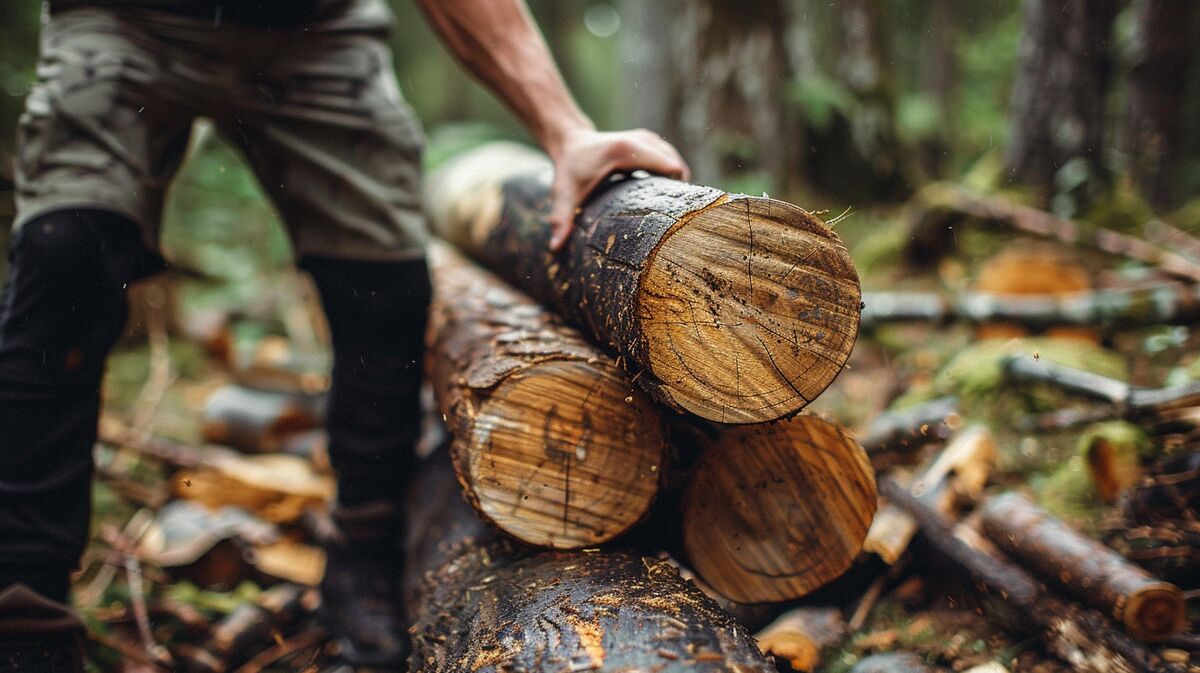
Tips for the exercise:
- Pay attention to your breathing - inhale while lifting, exhale while pushing.
- Feel the connection to nature while strengthening your muscles and making your heart beat faster.
- Switch up the exercises to have different levels of difficulty and target different muscle groups.
By regularly lifting and pressing tree trunks, you effectively build muscles and improve your overall fitness… all without a gym membership fee!
Jogging & Sprinting in the Terrain for Better Fitness
I love running in the forest. It not only refreshes my body but also my mind.
Here are some tips on how to improve your fitness with running and sprinting in the greenery:
- Find a good trail. Not every path is the same. Some have roots, others have rocks. Choose a path that challenges you but is safe.
- Start with a warm-up. A short warm-up helps prevent injuries. Do some stretching or light jumps.
- Alternate between jogging and sprinting. Begin with an easy run to increase your heart rate. Then give it your all in a sprint for a short period.
- Use natural obstacles as challenges. Jump over tree trunks or dodge large rocks.
- Pay attention to your breathing. Try to breathe deeply and evenly, especially when it gets tough.
- Set goals for the distance and your pace. Try to go a little further or faster each time.
- Listen to your body! If you feel pain or very exhausted, take a break.
- Wear the right clothing and shoes for your forest adventure.

Running in the forest is fun and diverse - much better than always doing the same loop in the gym! With these tips, you can improve your endurance and fully enjoy nature.
Tips for effective & safe training in nature
My tip: Always start with a warm-up to prepare your muscles and avoid injuries.
Warm up to prevent injuries
A good start is half the battle - this also applies to training in the forest. Before I move between trees and over roots, I always make sure to warm up thoroughly.
This gets my blood pumping and gets my muscles ready for the adventure. Instead of immediately tackling heavy logs or pulling on branches, I start with light stretching exercises and jogging in place.
So I gradually increase my body temperature and readiness.
Warming up is already the first step towards success.

Because, as we know, a warm-up before actual strength training in the forest reduces the risk of strains and other injuries. And it improves oxygen supply throughout my entire body.
So I am not only safer on the go, but can also reduce stress better and fully enjoy the positive effects of the training.
Also remember to start slowly and then gradually increase the intensity.
Your body will thank you.
Gradually increase and listen to your body
Training in the forest is like an adventure. But not so fast! Let's start slowly…
A tree trunk may be simply circumvented at first, before we attempt to lift it. The goal is to give our muscles and our mind time to adapt.
Always listen to your body.
If something hurts, we take a break.
Does it feel good, let's maybe try a little more? But always with caution. 👆
Feeling your knees while hiking uphill or your breath during a sprint through the forest - these are signs that you are alive and growing. Give your body the chance to adapt to the new challenge.
Today you may only be carrying small branches, but over time they will turn into whole tree trunks. Progress slowly and stay committed. Your next workout in the forest is already waiting for you!
Proper Clothing & Shoes
Choose the right clothing for your outdoor workout. It should be breathable and provide protection, similar to hiking gear. In my guide "Hiking in All Weather: How to Dress for Hiking in Nature," you will learn what you should pack.
This is important because it can help you avoid slipping, tripping, and other accidents. Breathable materials will help you stay cool and dry while moving outdoors.
Sturdy shoes with a good tread give you the necessary grip on forest floors. This way you can move around safely and fully concentrate on your training.
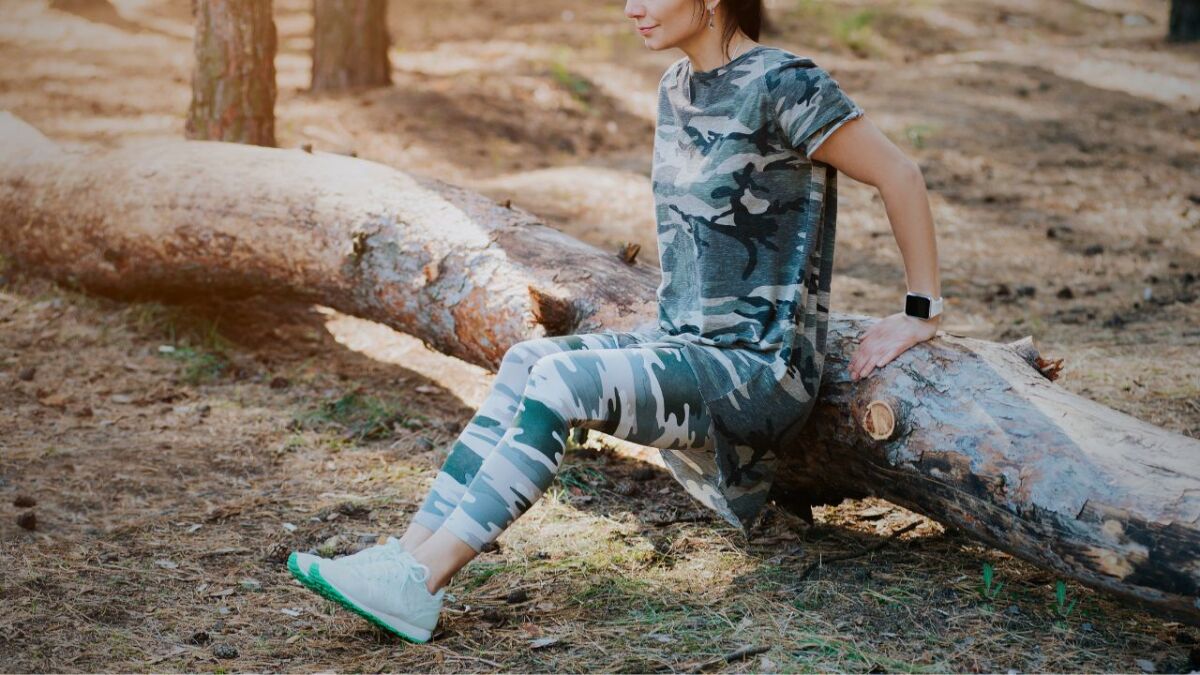
I pay attention to materials that don't restrict me. This way, I stay flexible for every exercise, from sprinting to climbing.
A sudden rain shower? No problem for me. My jacket repels water and keeps me warm. I choose colors that blend into the surroundings. Camouflage is not just a game - it connects me to the forest.
Good equipment not only makes outdoor training safer, but also more enjoyable.
Summary of the Benefits of Forest Fitness
Forest Fitness not only sounds cool, it is also a Mega Upgrade for your body - and your soul!
Imagine breathing in the fresh forest air deeply, while your muscles get stronger with each exercise.
Forest Fitness connects you with nature and reduces stress. If you would like to learn more about the power of connecting with nature, read my article "Being close to nature is not just important – it is extremely important!".
And then there is the head … After a day in the office, nature gives you the necessary balance.
Stress melts faster than ice in the sun.
So, grab your sneakers and head into the woods! Your body will thank you.
Frequently Asked Questions
1. Why should I exercise in the forest instead of the gym?
Training in the forest is like a breath of fresh air for body and mind. The forest air contains 90 percent fewer dust particles than city air, which has a positive effect on your lungs. Plus, it's simply more varied and exciting to work out with your whole body in the fresh air.
2. What exercises can I do in the forest?
Imagine doing pull-ups on a branch, balancing on a fallen tree trunk, or doing squats while holding a stone over your head. The forest offers endless opportunities to get in shape from head to toe.
3. Do I need special equipment for my forest workout?
No, the beauty of outdoor training is that nature is your gym. Your equipment is branches, stones, and tree trunks. Your body weight does the rest.
4. How does exercising in the forest affect my mental health?
When you exercise in the great outdoors, less of the stress hormone cortisol is released. That means you say goodbye to stress and hello to good mood. Exercising in nature is like balm for the soul.
5. Can I also train in a group in the forest?
Sure thing! Group training in the forest is not only more fun, but also motivating. Sweating together and mastering the challenges of nature strengthens teamwork and friendship. Just like with bushcraft activities with friends. For inspiration, take a look at my "19 Bushcraft Ideas" that will definitely sharpen your skills and provide fun in the forest.


Author of the guide
Martin Gebhardt
Hey, I'm Martin. On my blog, you will learn the basics and numerous details about living in the wild. I think survival, bushcraft and the good life in nature are the keys to happiness. Find me here on Instagram or on YouTube. You can find more about my mission on the About Me page.
Was this guide helpful?
19 people found this guide helpful.
5.00 out of 5 points (19 Ratings)
Comments (0)
This post may contain affiliate links. So if you click on the links and make a purchase, I will receive a small commission at no additional cost to you. Click here, to learn more about it.


